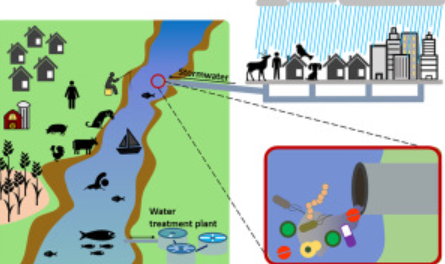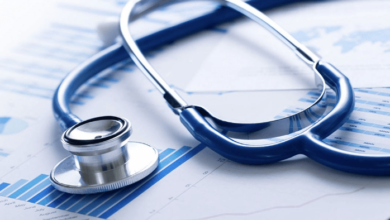Advancing Water Quality and Environmental Care Through Microbial Respiration Analysis

Table of Contents:
- The Role of Oxygen Demand in Water Quality Assessment
- Water Treatment Innovations and Respirometry Advances
- Monitoring Ecosystem Health Through Respirometry
- Community Involvement in Water Stewardship
Key Takeaways
- Respirometry is an analytical technique that measures microorganisms’ oxygen consumption rate. It provides insights into the biodegradability and toxicity of pollutants in water.
- Technological advances in respirometry are enhancing the precision and efficiency of wastewater treatment, leading to better conservation outcomes.
- Public policy and community engagement are essential for effective water stewardship and the broader adoption of methods like respirometry.
The Role of Oxygen Demand in Water Quality Assessment
The health and balance of ecosystems are integral to the viability of our planet. In aquatic ecosystems, the dissolved oxygen content is particularly telling of the environment’s health. Here, Biochemical Oxygen Demand (BOD) is a telling measure. It indicates the rate at which microorganisms consume oxygen in the water as they break down organic matter.
Elevated BOD values are a warning signal indicating the overwhelming presence of organic pollutants that put excessive demand on oxygen levels, potentially leading to an oxygen-depleted state known as hypoxia.
Water assessment and management systems significantly hinge on a thorough understanding of BOD. It directly affects the decisions various stakeholders, including environmentalists, policymakers, and industrial giants, make when managing wastewater. Observing BOD levels aids in identifying and controlling the entry of harmful effluents into natural water bodies, thereby curbing the loss of marine biodiversity and securing ecological integrity.
Applying this knowledge, stricter environmental policies have been formulated globally. Policymakers reference BOD and other respirometric findings to ensure that the aftermath of industrialization does not weigh heavily on our water resources. Integrating respirometry into policymaking speaks volumes about science’s critical role in contemporary environmental stewardship.
Water Treatment Innovations and Respirometry Advances
The water treatment sector has seen a transformation driven by technological advancements, particularly in analyzing and addressing pollution and its detrimental effects.
Within this landscape, respirometry has proven instrumental for its traditional use in measuring oxygen levels and understanding more complex biochemical cycles, such as nitrogen cycle, which includes the pivotal nitrification process. Indeed, nitrification analysis through respirometry is becoming increasingly vital to developing efficient water treatment plans.
An example of technological innovation in the field is the automation of respirometric measurements, which enables continuous monitoring and real-time data acquisition. This increased level of detail permits an improved understanding of microbial oxygen consumption under various conditions. Such precision equips industries with the means to design, adjust, and operate biological wastewater treatment systems accurately, directing resources for maximum pollutant breakdown while minimizing environmental impact.
Moreover, scientific research underpinned by respirometric analysis reinforces the growth of green industries. These breakthroughs preserve natural water bodies and align with sustainable development objectives. It’s clear that respirometry, as an established but evolving technique, promises indispensable benefits for future water treatment processes, especially in an age where environmental pressures are escalating.
See Also: Maximizing SEO Benefits: Understanding the Power of Strategic Keyword Placement
Monitoring Ecosystem Health Through Respirometry
Environmental scientists and ecologists rely on respirometry to paint a comprehensive picture of aquatic health. By gauging minute changes in the metabolic rates of microorganisms, this procedure offers insights into the ecosystem’s resilience or vulnerability.
Understanding these metrics permits the timely identification of ecological imbalances precipitated by pollutants, thereby aiding in the prevention of large-scale damage. Furthermore, these insights help align conservation strategies with empirical evidence, bolstering the efficacy of measures designed to protect and restore the vitality of water systems.
Moreover, advancements in respirometric equipment have expanded the horizons of environmental monitoring. Data can now be captured on a granular level, revealing the presence of pollutants and other stressors that could be influencing microorganism communities. These developments make respirometry a linchpin in the quest to ascertain and safeguard the health of our water resources.
Respirometry is thus more than merely a technical method. It serves as a barometer for the well-being of the entire aquatic system. Such methodologies significantly enhance the bandwidth of environmental risk assessments and prompt necessary interventions to maintain the fragile balance within marine ecosystems.
Community Involvement in Water Stewardship
While expert analyses and technological solutions are crucial, the involvement of local communities is also pivotal in the sustained health of water resources. Grassroots efforts, supported by tools such as respirometry, bring new dynamics into environmental care.
For instance, citizen science projects enable individuals to participate in respirometric monitoring and contribute to broader research objectives. Such inclusive approaches foster knowledge sharing and joint responsibility in the quest for water quality maintenance.
Community education and participation are essential gears in the machine of environmental preservation. They instill a sense of shared ownership and responsibility among individuals for their surrounding natural resources. Implementing community-based respirometry projects unhinges the monopoly of data generation from the hands of the few and into the collective grasp of the many, paving the way for democratic engagement in environmental matters.
The ripple effects of such community-centric initiatives cannot be understated. From building awareness to influencing behavioral changes and policymaking, the empowerment of communities through science represents a catalyst for long-term ecological resilience. It’s a testament to the power of collective will and unity in safeguarding our planet’s life-sustaining water systems.
Integrating intricate scientific practices such as respirometry into environmental conservation and educational discourse fabric outlines the path toward ecological enlightenment and action. Integrating robust scientific methodologies with community wisdom serves not just the interests of academia but resonates with the broader narrative of sustainable living and water resource preservation.




